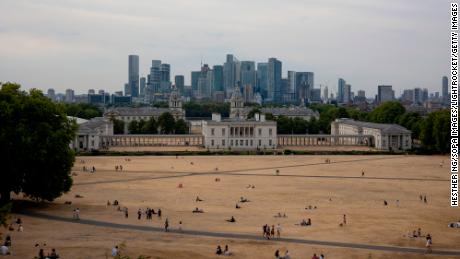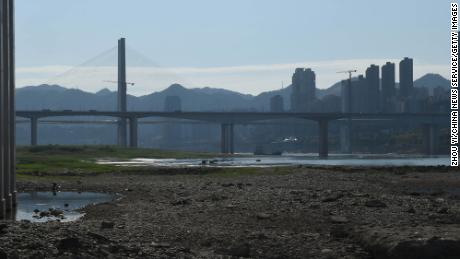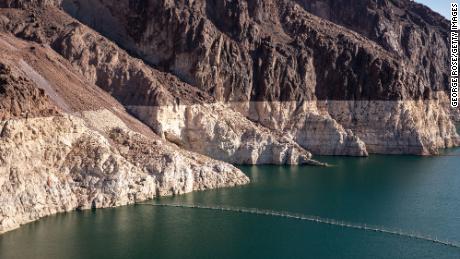Extreme heat and drought conditions are battering the United States, Europe and China, compounding problems for workers and businesses at a time when economic growth is already slowing sharply and adding to upward pressure on prices.
In China’s Sichuan province, all factories have been
ordered shut for six days to conserve power. Ships carrying coal and chemicals are struggling to make their usual trips along Germany’s Rhine river. And people living on America’s West Coast have been asked to use less electricity as temperatures soar.
These events “have the capacity to be quite significant for the particular regions that are affected,” said Ben May, director of global macro research at Oxford Economics.
The extent of the pain could depend on how long the heatwaves and lack of rain last. But in countries like Germany, experts warn there’s little relief in sight, and companies are preparing for the worst.
Extreme weather and an economic slowdown
It’s not just the Rhine. Around the world, rivers that support global growth — the Yangtze, the Danube and the Colorado — are drying up, impeding the movement of goods, messing with irrigation systems and making it harder for power plants and factories to stay cool.
At the same time, scorching heat is hampering transportation networks, straining power supply and hurting worker productivity.
“We shouldn’t be surprised by the heat wave events,” said Bob Ward, policy and communications director at the London School of Economics’ Grantham Research Institute on Climate Change and the Environment. “They’re exactly what we predicted and are part of a trend: more frequent, more intense, all over the world.”
China is facing its fiercest heat wave in six decades, with temperatures crossing 40 degrees Celsius (104 degrees Fahrenheit) in dozens of cities. Parts of California could see temperatures as high as 109 degrees Fahrenheit this week. Earlier this summer, temperatures topped 40 degrees Celsius in the United Kingdom
for the first time ever.
The global economy was already under pressure. Europe is at high risk of a recession as energy prices soar, stoked by Russia’s invasion of Ukraine. High inflation and aggressive interest rate hikes by the Federal Reserve jeopardize growth in the United States. China is grappling with the consequences of harsh coronavirus lockdowns and a real estate crisis.
“At present, we are at the most difficult point of economic stabilization,” Chinese Premier Li Keqiang
said this week.
Something else to worry about
Extreme weather could exacerbate “existing pinch points” along supply chains, a major reason inflation has been difficult to bring down, May of Oxford Economics said.
China’s Sichuan province, where factories have shuttered production this week, is a hub for makers of semiconductors and solar panels. The power rationing will hit factories belonging to some of the world’s biggest electronics companies, including
Apple (AAPL) supplier Foxconn and
Intel (INTC).
The province is also the epicenter of China’s lithium mining industry. The shutdown may push up the cost of the raw material, which is a key component in electric car batteries.
The neighboring city of Chongqing, which sits at the confluence of the Yangtze and Jialing rivers, has also ordered factories to suspend operations for a week through next Wednesday to conserve electricity, state media The Paper reported.
Forecasts for China’s economy this year are already being downgraded as a consequence. Analysts at Nomura cut their 2022 projection for GDP growth to 2.8% on Thursday — way below the government’s 5.5% target — while Goldman Sachs trimmed its forecast to 3%.
Germany’s shrinking Rhine, meanwhile, has dropped below a critical level, impeding the flow of vessels. The river is a crucial conduit for chemicals and grain as well as commodities — including coal, which is in higher demand as the country races to fill storage facilities with natural gas ahead of the winter. Finding alternative forms of transit is difficult given labor shortages.
“It is only a matter of time before plants in the chemical or steel industry are shut down, mineral oils and building materials fail to reach their destination, or large-volume and heavy transports can no longer be carried out,” Holger Lösch, deputy director of the Federation of German Industries, said in a statement this week.
Low water levels along the Rhine shaved about 0.3 percentage points off Germany’s economic output in 2018, according to Carsten Brzeski, global head of macro at ING. But in that instance, low water wasn’t a problem until late September. This time around, it could lower GDP by at least 0.5 percentage points in the second half of this year, he estimated.
Economic sentiment in Germany continued to dip in August, according to data released this week. Brzeski said the country “would need an economic miracle” to avoid falling into a recession in the coming months.
In the American West, an extraordinary drought is draining the nation’s largest reservoirs, forcing the federal government to implement new mandatory water cuts. It’s also forcing farmers to destroy crops.
Nearly three quarters of US farmers say this year’s drought is hurting their harvest — with significant crop and income loss, according to a survey by the American Farm Bureau Federation, an insurance company and lobbying group that represents agricultural interests.
The survey was conducted across 15 states from June 8 to July 20 in extreme drought regions from Texas to North Dakota to California, which makes up nearly half of the country’s agricultural production value. In California — a state with high fruit and nut tree crops — 50% of farmers said they had to remove trees and multiyear crops due to drought, which will affect future revenue.
Without significant investment in upgrading infrastructure, costs will only keep rising, Ward of the London School of Economics noted. And the impact may not be incremental.
“There are signs these heat episodes are not just becoming slightly more intense and frequent over time. It’s happening in a kind of non-gradual way, and that will make it more difficult to adapt,” Ward said.
— Laura He, Shawn Deng, Simone McCarthy, Benjamin Brown, Aya Elamroussi, Taylor Romine and Vanessa Yurkevich contributed reporting.






























